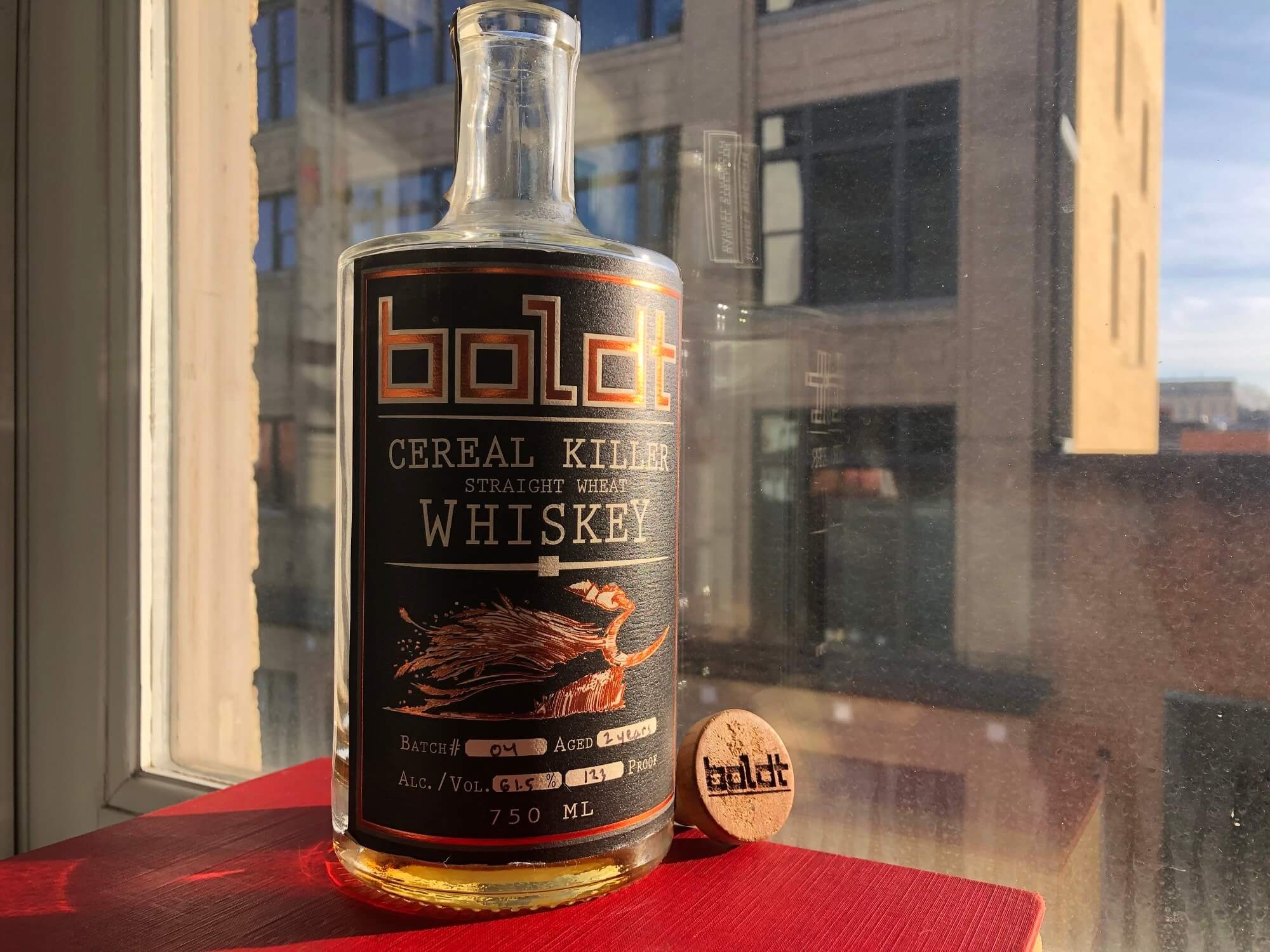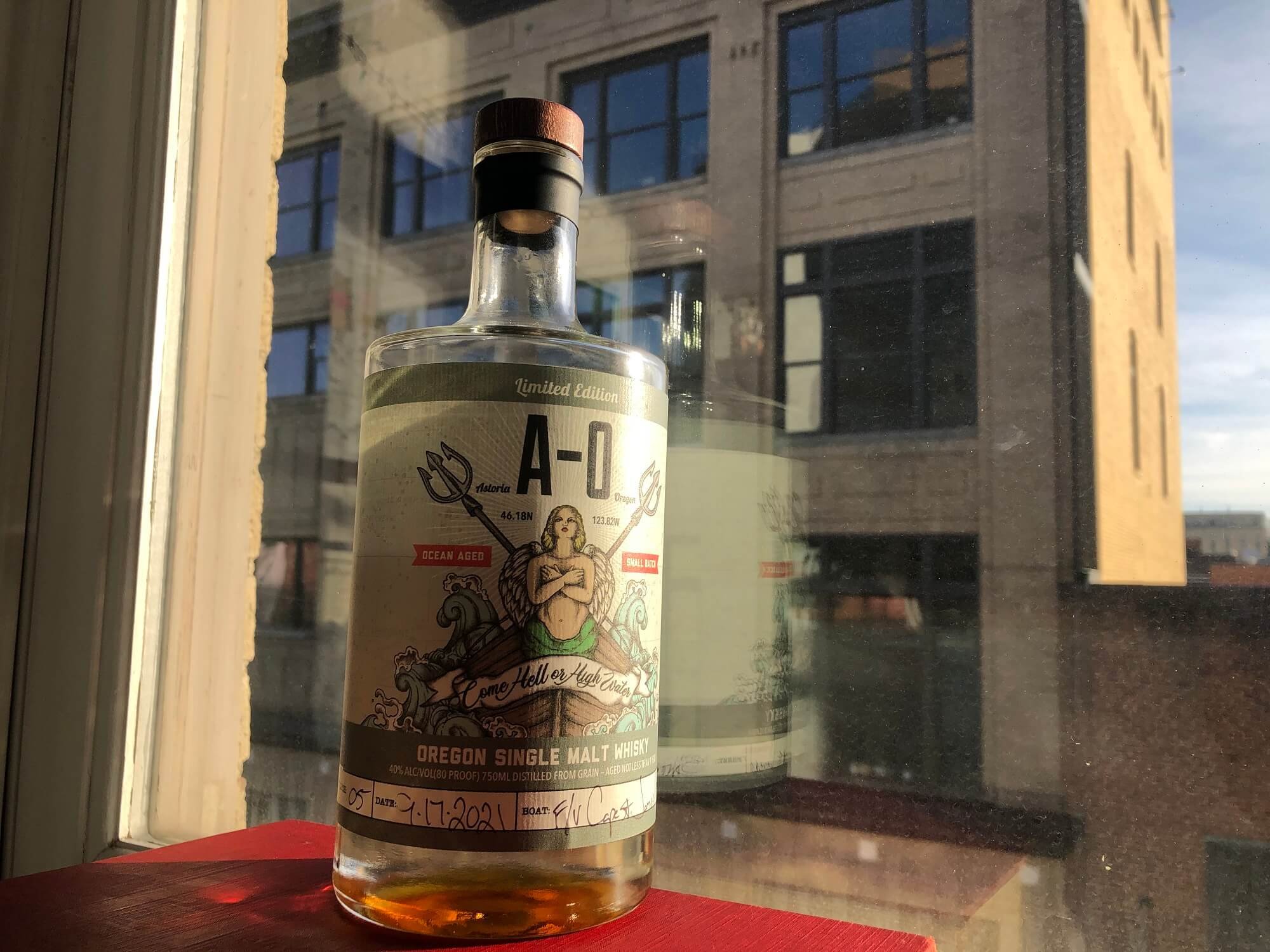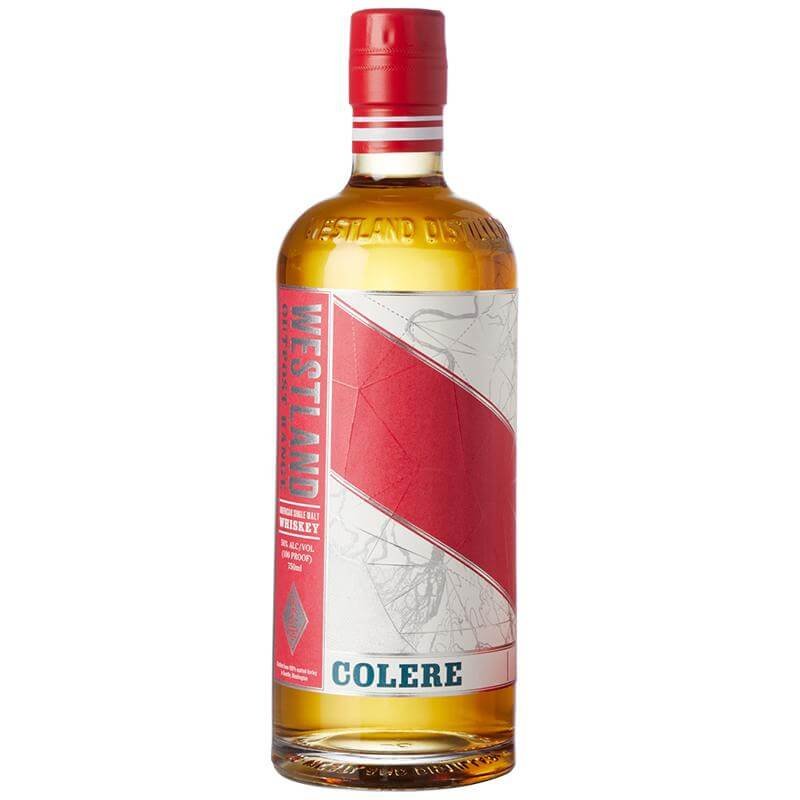How the West Coast is Offering a New Taste of American Whiskey
Far from the Appalachian hollers where American whiskey makers are best known to sit and watch a pot still, runs thirteen hundred miles of fog-swept, mountainous coastline.
Whiskey reminds Americans of their rustic and free-spirted past; the "west coast" is a go-to trope for the country's technocratic future. But today, a new story is being written on the golden grasslands, dark evergreen forests and peatlands — and as Matt Hofmann, master distiller of Seattle-based Westland Distilling, said: "we're writing it with the whiskey itself."
There’s a cautious urgency in West Coast distillers, a make-your-own-way urgency that comes from being a relative newcomer in a crowded field. But it also comes from more existential crises: drying aquifers, scorching summer heat which threatens wheat as much as grapes, almonds and sequoias. "I'm really concerned for our local farmers this year," Amy Bohner, co-owner of Alchemy Distillery in Arcata, California, confided at the beginning of this year’s drought, among the worst on record. "They rely on springtime rains that still haven't come.” They never truly did.
So for those at the forefront of West Coast whiskey making, each year is as much a chance to reflect on the changing land as it is an opportunity to showcase its taste — or tastes, rather. For the short answer to “Is there a West Coast terroir?” is “no.”
The long answer requires some sipping.
Boldt Cereal Killer Straight Wheat Whiskey (123 Proof) Alchemy Distillery, Arcata, California
Producing only two barrels a month, Alchemy Distillery has a breadth of creativity that belies the size of its husband-and-wife team. Amy and Stephen Bohner, a high-proof power couple, distill everything from pungent spiced gins to hefty whiskeys made from organic leftover bagels in their Vendome pot still — all while also doing full-service construction around California.
To get a sense of Arcata, I sampled the 100% wheat Boldt Cereal Killer which took silver at the 2019 American Distilling Institute's World Spirits Competition.
Named after Humboldt County where Alchemy distills and often purchases its grain bill, including this 100% wheat varietal, it's worth noting that locality isn’t a trait limited to the Cereal Killer — “anything we can get locally, we always do,” Amy notes, right down to the American-made bottles.
On the nose, this whiskey is rich and buttery: you’ll sense a rich glaze, freshly cut sweet roll and rum-soaked raisins give way to fresh bran muffins; there is something distinctly brown sugary about that hints at flavors to come. The Bohners keep their grains unmilled until the day before mashing, and the difference is akin to coffee ground weeks prior and coffee ground this morning.
On the tongue, this whiskey isn’t shy about being a barrel-strength 123 proof, but don’t water it down just yet: the rich, whole wheat bread body has a sweetness that melts into a light spread of honey butter. With ice, there’s more whole wheat bread with a layer of cinnamon and nutmeg sprinkled on butter.
The finish is burning leaves in mid-October, thanks to the oak staves that age Alchemy’s Cereal killer for two years. Completely air-dried and fire-charred, these barrels; no rush of kilns or propane flame. Demptos Napa Cooperage, Boldt’s exclusive barrel sourcer, sources their oak from Cuba, Missouri, and after seeing a few barrels made in person, Amy was hooked. The result is a richer, sweeter, campfire finish that mellows the alcohol from sip to finish.
Husband and Wife Team Amy and Stephen Bohner of Alcheny, photo courtesy Alchemy Distillery)
The “Cereal Killer” is an outline, not a formula, and you can expect different things from Boldt with every distilling run, like 100% rye or triticale, aging beyond two years and 101-proof varieties in a nod to Highway 101. “It's very rare that you're going to see the same recipe twice in our barrels,” says Amy. That's partially because they intentionally vary the flavor to reflect what’s available. But draught too is a factor, especially with the “dry” farms who are their foundation. “Can we always go a little further south and get [irrigated] grain year-round because they're large farmers on a larger scale, and they'll always have grain for us? Yes. But a big part of who we are is supporting our local farmers. And it's not their day job either, it’s their passion."
Though Amy worries continued drought seasons might force their hands, she and her husband continue to fight for hyperlocal flavors, and each bottle, with its branded wooden stopper, is a detailed, vivid record of Californian flavors. It’s well worth visiting the distillery directly or stopping by one of the bars lucky enough to carry it — and be sure to try it neat the first time.
AO Limited Release photo courtesy MT Eley
AO Limited Release Come Hell or High Water Oregon Single Malt (80 proof) Pilot House Distilling, Astoria, Oregon
Perched on the northern edge of Oregon, Astoria is cooler and damper than the dry mountains of northern California. America’s first settlement west of the Rockies is a pleasant town of just under ten thousand beneath the petined Astoria-Megler Bridge as it spans the Columbia River’s yawning mouth. Most will recognize it as the setting of The Goonies and Free Willy, as Pilot House Distillery owner Larry Cary reminds me with a laugh.
Larry and I discuss the regrettable inefficiencies of pot stills ("Basically like an abacus for an accountant") to the mood swings of his soon-to-be-replaced 250-gallon hybrid still ("She’s not going anywhere ... But I know she’s mad right now"). But of most interest to anyone seeking local flavor is his distillery's salty take on their traditional single malt, which sees two-year-old barrels heading out on local fishing and shrimping boats in lieu of a quiet finale in the rackhouse. Larry's whiskey-fleet even counts among its members The Maverick, of Deadliest Catch fame.
"These are small boats," says Larry. “The whiskey doesn’t go in the bulkheads, it’s usually on the bow or the pilothouse, it’s on the deck. I’ve gotten great pictures of them out at sea, covered in fish or ice."
Pilot House Barrels Are Loaded Aboard the Cape St. James for Aging photo courtesy of Pilot House Distilling
Founded in 2013, Pilot House Distilling followed the traditional route for distilleries, beginning in clear spirits and segueing into brown ones as time allowed. Similar to Alchemy Distillery, the relationship of product to locality was always important, says Larry.
“All my grains come from the northwest, our local millers. I have one farmer coming up to talk about my needs for the year, and he’ll be growing a special grain of corn that we’ve been working on together. So probably in three years, you’ll see a very Oregon-exclusive grain, an heirloom-style corn. I really want to find something that’s more isolated to this region, with a flavor profile that illustrates what Oregon has to offer.”
For now, the most visible local influence is definitely the sea as it works the 80-proof Hell or High Water barrels, up and down the Pacific coast. Astoria weather, tied for the most humid in the continental United States, doesn’t subject the barrels to too much angel’s cut or rapid temperature swings, so those months sloshing about the barrels at sea have a surprisingly subtle influence on the whiskey’s oakiness — cold, humid sea air once again helps this barrel to mature more smoothly than what you’d find in something that spent years in a Kentucky rackhouse.
Your first smell is a snatch of salty, rich nuttiness that comes from the sea spray mixing with the traditional single malt sweetness and the gentle influence of the barrels. If you’re a fan of peanut-heavy trail mix, you might smell a little of that here. You might also smell freshly-grated cinnamon.
The palate is a wonderful rush of fresh-baked cookies — salt and butter — and softening into Nutter Butters or Cracker Jack. I typically avoid referencing the peanut because of the rash of peanut-butter-flavored whiskeys that pollute the earth, but there are few closer comparisons to a pleasant mix of sweetness, genuine saltiness here besides that soft-spoken legume. On the finish, tere’’s flavors of caramel corn, cinnamon toast, vanilla extract, almost Irish cream here, too, and these last well after you’ve finished your sip. It’s an intriguing sipper that gets both novices and connoisseurs excited.
Outside of visiting their Astoria or Portland tasting rooms, Oregon residents can purchase these bottles in-store and, alongside Alaskan and Washington, D.C. residents, can even have them shipped.
Westland Colere # 1 Courtesy of Westland Distillery
Colere Edition 1 American Single Malt Whiskey (100 proof) Westland Distillery, Seattle, Washington
Seattle is no Edinburgh, but its famously rainy, damp weather and bevy of strong distilleries certainly call to mind the mother country of single malts. But far from leading Westland Distillery into an imitation game with scotch, master distiller Matt Hofmann has carved an impressive name for the company as an American distiller producing distinctly American tastes.
"For us [at the beginning], there was a realization that we wanted to make something that is reflective of this place. I don't think we really knew the magnitude of that decision," says Matt Hofmann, Westland's managing director and self-described "lover of delicious things."
"Our approach was very different, and it was informed by Pacific Northwest culture. And not even intentionally. The brewing industry out here looks at barley in a fundamentally different way, as a source of flavor. Whereas in the world of Scottish whisky-making, they don't do it at all. In fact, most distilleries still deny that it has flavor."
As a result of beer-inspired methodology, barley gets prime billing at Westland, which works with local farmers and funds Washington State University research into more diverse, local-centric barley that falls outside the commodity market, or what Matt calls "wartime agriculture."
"Agriculture, after World War II, continued in this wartime state," he explains. "There's an opportunity for us collectively as Americans to [say that] we don't need to behave like this, like a nation at war, where we need to produce the max amount of one thing and feed it to ourselves like robots. In the Skagit Valley, which is an hour's drive north of Seattle, you don't need to grow a variety here that also grows in South Dakota or Montana. You can if you want, but you can also do things that only grow here. There are purple barleys and red barleys and blue barleys and black barley. All of that stuff is rejected by the commodity system for color alone. To have flavor is viewed as a negative. What you end up within the commodity system today is that there's no kind of environmental terroir connection."
Westland brings to the table a variety of whiskeys that rely on core components that would be rejected as aberrations elsewhere. But for me, it is the distillery's “Colere” bottle that truly consummates Matt’s vision with a distinctly unique flavor. The first edition of “Colere”(which means “to cultivate”) hinges on a specially-bred, six-row barley varietal called Alba. It stands aside — or ahead of their flagship whiskey, as part of their “Outpost” collection.
Its color is a cider-like gold hue, decidedly different from the ruddy ambers of Boldt’s Cereal Killer and Pilot House’s Hell-or-High-Water. It’s the result of intentionally aging the product in used whiskey barrels to focus attention away from any oak flavors and more on the barley, meaning this isn't one of those bottles where you’re paying rent on the barrel; its prince point, $150-$180 depending on taxes, is almost a full reflection on the unique grain flavors and the hardy, regional barley that made them.
On the nose, you quickly find that barley is anything but a neutral presence in whiskey. Floral, raspberry, blueberry, bran flakes, grape nut cereal — indeed, there is something “grape-y” about the nose that compliments Matt's frequent references to viticulture and its terroir focus, but it’s not raisiny. Lovers of outdoor BBQ will detect grilled pineapple slices, too.
Colere, with its intentionally unique mash bill, is about as novel as it can get in the single malt world. It is pleasantly bitter yet syrupy-sweet without remotely being mawkish or sickly sweet; it reminds me of magnolia tree seeds in the American South; a rich, earthy sweetness that smells faintly of fermentation and leaves. It has that twang that one might find in the Scottish single malts, but with a novel and refreshing tartness that is far from the mustiness of plain old scotch. The palette is otherwise light brown sugar, blueberry maple syrup — almost a bit tart once more, like fresh, fleshy figs. It broadens out to more grainy flavors, the salty-sweetness of whole wheat saltine crackers.
Matt is characteristically — for all these distillers — humble about the origin of Westland's defining focus. “When we were first getting started, the idea of 'terroir' and 'provenance' and of expressing the place — we were barely even conscious of it.”
But now? "I genuinely don't think that I could make whiskey any other way.
Bottles of Colere can be purchased on Westland’s website or in person at their Seattle distillery.
The West Coast Terroir
In my flight up the West Coast, certainly the most unifying taste profile was a grain-centric one: these distilleries have had time to age whiskies five years (as well as local access to climates that would make doing so taste like ten Kentucky years), yet oakiness rarely served more than a supporting role in these grain-forward productions, letting the grain take center stage and showcase its environment.
There, the similarities stopped. The answer lies in the oxymoron that is “West Coast Terroir” — for though it may all touch the same ocean, the West Coast is made up of soils and climates that span, well, a continent. But here’s something more to terroir, and in this, the West Coast has one enduring, inimitable shared trait.
“The [French] word ‘terroir’ in English has missed 'culture,'” Matt reflected towards the start of our conversation. “Whereas in French, it includes the culture of the people who make it.” And the culture here is that same pioneering, prospecting spirit of reinvention that has defined the American West Coast since settlers first pitched a tent in Astoria.
Alors —- vive le West Coast.





